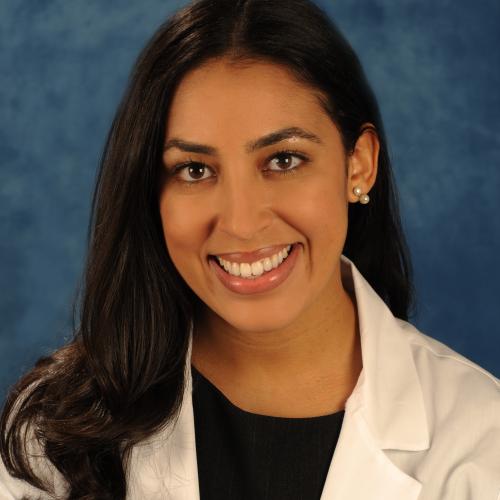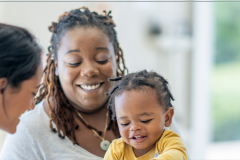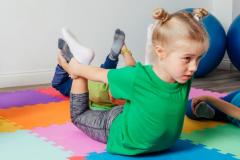- Overview
-
Research focused on craniofacial pathologies and their treatment outcomes, and advancements in surgical education.
- Publications
-
Pediatric Hand Fracture Outcomes: How Often Do We Need to Operate?,Évolution des fractures de la main chez l'enfant : à quelle fréquence devons-nous opérer?
Plastic Surgery
Wei, S. and Forbes, D. and Hartley, R.L. and Salhi, S. and Fraulin, F.O.G. and Harrop, A.R. and Arneja, J.S.
DOI: 10.1177/22925503221085076
2024Reduction Glossectomy for Macroglossia in Beckwith-Wiedemann Syndrome: Is Post-Op Intubation Necessary?
Cleft Palate-Craniofacial Journal
Geisler, E.L. and Jeffers, J. and Salhi, S. and Perlyn, C.A.
DOI: 10.1177/1055665621991739
2022Surgical Management of Spasticity of the Elbow
Hand Clinics
Berger, A. and Salhi, S. and Payares-Lizano, M.
DOI: 10.1016/j.hcl.2018.06.007
2018Polydactyly reconstruction
Global Reconstructive Surgery
Salhi, S. and Berger, A.J.
DOI: 10.1016/B978-0-323-52377-6.00040-9
2018Use of a nasopharyngeal cannula as a skin protector during lipoaspiration
JPRAS Open
Salhi, S. and Meunier, F. and Cordoba, C.
DOI: 10.1016/j.jpra.2017.04.004
2017Distichiasis following transconjunctival approach to the inferior orbital rim and orbital floor
JPRAS Open
Salhi, S. and Cordoba, C.
DOI: 10.1016/j.jpra.2015.06.007
2015Cerebral venous sinus thrombosis after breast reconstruction
Journal of Plastic, Reconstructive and Aesthetic Surgery
Salhi, S. and Tantawi, S. and Bou-Merhi, J. and Bernier, C. and Danino, M.A.
DOI: 10.1016/j.bjps.2014.11.002
2015A novel method of pannus suspension during massive panniculectomy
JPRAS Open
Salhi, S. and Cordoba, C.
DOI: 10.1016/j.jpra.2015.04.001
2015Appreciating the global impact of cleft lip and palate at the medical school level
McGill Journal of Medicine
Tahiri, Y. and Salhi, S. and Sinno, H. and Luc, M.
2012Percutaneous fasciotomy for the treatment of Dupuytren's disease-a systematic review
Hand
Salhi, S. and Cardin-Langlois, E. and Luc, M.
DOI: 10.1007/s11552-011-9355-3
2011 - Research
-
Velopharyngeal Insufficiency Outcomes Prediction Study
Cleft palate is the most common craniofacial disorder. Following cleft palate surgery, 10-40% of patients will develop VPI (velopharyngeal insufficiency). VPI impacts a child’s speech intelligibility and acceptability affecting their education, relationships, and self-image. Two main types of surgery exist for VPI (palate re-repair and pharyngoplasty), and both have been reported with various efficacies at resolving speech, and potential risks of patients developing obstructive sleep apnea. This is a North American multicenter prospective observational study comparing the effectiveness of palate re-repair with pharyngoplasty for the treatment of VPI. The knowledge gained from this study will enable surgeons to select the most effective, least harmful surgical procedure for each patient.Recalculating the Lip Height in the Unilateral Cleft Lip Fisher Anatomic Subunit Repair
During surgical repair of a cleft lip, a plastic surgeon will use a surgical pen to mark their planned incisions. The lip height can be estimated using a calculation known as the Fisher’s formula. However, surgeons will often adjust the lip height using their clinical experience. This study aims to determine if the adjusted lip height can be calculated by a new mathematical formula. This will enable plastic surgery trainees to more effectively use the Fisher anatomic subunit repair technique.Identification of Rejection-Resistant Fibroblasts for the Improvement of Transplantation Outcomes and Wound Healing
Patients with injured tissues and/or organs, such as major burns covering >40% total body surface area (TBSA) can be treated by replacing damaged areas with a biological substitute. Biological substitutes cultured from a patient’s own cells have yielded promising results in early clinical trials; however their manufacturing time leads to treatment delays. Allogenic skin substitutes are an alternative, yet there is a risk of immune rejection. Therefore the identification of immune rejection-resistant skin cells could offer a solution. The main cells of skin are fibroblasts, and thus make up a large component of biological skin substitutes. Our preliminary studies identified a specific type of mouse fibroblasts that are resistant to transplant rejection. In this study, we are using skin samples obtained during the planned removal of excess tissue (e.g. extra digits, ear tags), to identify human fibroblasts that also resist rejection.Research Group MembersSara Blais, Medical Student Researcher
Rebecca Courtemanche, Clinical Research Manager
Genoise Etman, Medical Student
Kathy Vuong, Clinical Research Assistant
Researching mental health and substance use: Q&A with new investigator Dr. Trevor Goodyear
Dr. Trevor Goodyear's interest in working with youth stems from several years as a registered nurse in Ontario and BC, including in child and adolescent mental health at BC Children's Hospital. He joined BCCHR as an investigator in October 2025.





